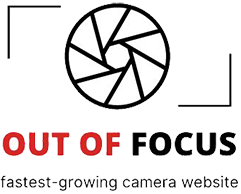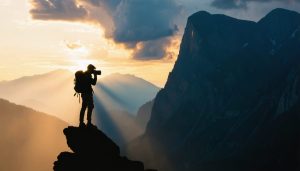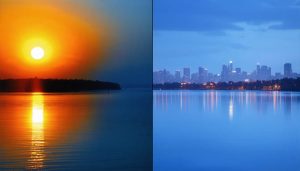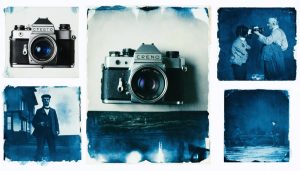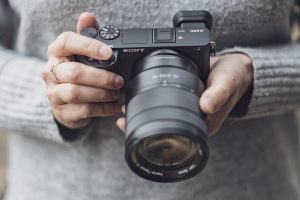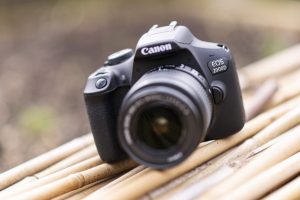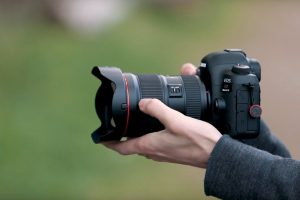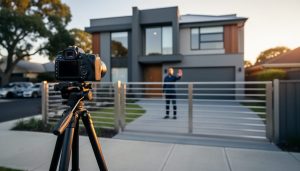
Strip away visual noise by isolating single subjects against negative space – a solitary tree against a foggy sky or a red door on a white wall creates immediate impact. Frame architectural elements to emphasize clean lines and geometric patterns, positioning your camera to capture the pure interplay of light and shadow. Adopt a mindful approach to photography by removing all but the essential elements, letting simplicity guide your composition.
Minimalist photography transforms ordinary scenes into powerful statements through deliberate reduction. Master the art of negative space, where emptiness becomes as important as the subject itself. Work with monochromatic color schemes, strong contrasts, and precise compositions to create images that command attention through their simplicity. Focus on form, texture, and repetition while eliminating distracting elements that don’t serve your visual narrative.
Remember: minimalism isn’t about emptiness – it’s about intentional restraint. Whether capturing urban architecture, natural landscapes, or abstract details, successful minimalist images communicate maximum impact through minimum elements. By embracing simplicity in your photographic approach, you’ll create more compelling and emotionally resonant images that stand out in today’s visually cluttered world.
The Core Principles of Minimalist Photography
Negative Space
Negative space, also known as white space, is a powerful compositional tool that can transform an ordinary photo into a striking minimalist image. By deliberately incorporating empty areas around your subject, you create breathing room that draws attention to the main element while conveying a sense of simplicity and calm.
To effectively use negative space, start by identifying a strong primary subject. This could be anything from a lone tree against a vast sky to a single flower against a plain wall. The key is to ensure the empty space occupies roughly two-thirds of your frame, allowing your subject to stand out dramatically against the uncluttered background.
Consider the relationship between your subject and the surrounding space. The empty area should complement your subject rather than compete with it. Experiment with different angles and compositions – sometimes positioning your subject off-center can create more dynamic tension and visual interest.
Light and texture in the negative space matter too. Even a seemingly empty sky or blank wall can contribute to your image through subtle gradients or textures. Just remember that these elements should enhance rather than distract from your main subject.
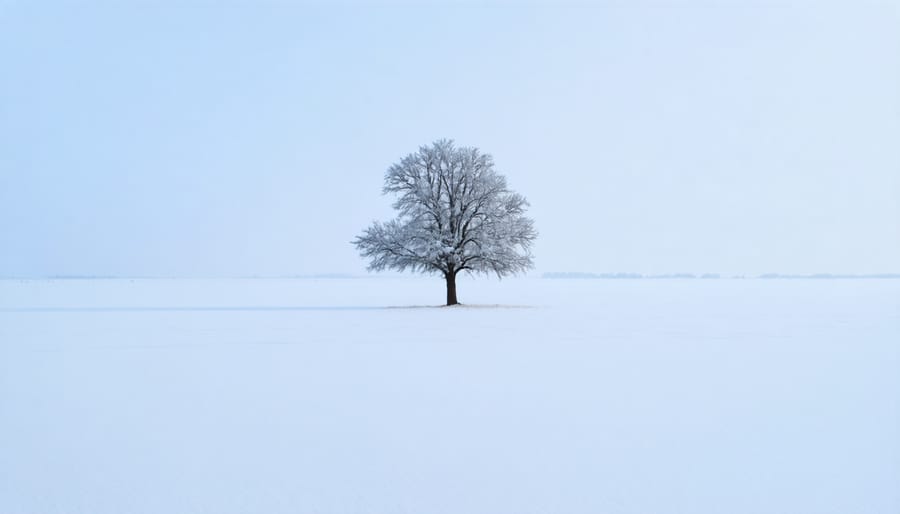
Single Subject Focus
The essence of minimalist photography lies in making a single subject command attention. Start by identifying a strong primary element – this could be anything from a solitary tree against a clear sky to a bright red umbrella in a stark white environment. The key is creating visual impact through isolation.
To achieve this, position your subject carefully within the frame. The rule of thirds can be effective, but don’t be afraid to place your subject dead center when it serves the composition. Consider using negative space strategically – the empty areas around your subject can be just as important as the subject itself.
Focus on eliminating distractions from your frame. Move around your subject to find angles that exclude background clutter. If possible, shoot against simple backgrounds like clear skies, blank walls, or out-of-focus natural settings. Using a wider aperture (lower f-number) can help blur the background, drawing even more attention to your main subject.
Play with scale and perspective to enhance impact. Sometimes, making your subject appear smaller within a vast empty space can create a more powerful statement than filling the frame entirely. Remember, in minimalist photography, less truly is more.
Color and Contrast
In minimalist photography, less is more when it comes to color and contrast. By limiting your color palette, you can create powerful images that speak volumes through simplicity. Consider working with monochromatic schemes or incorporating just one bold accent color against a neutral background. Understanding basic color theory principles will help you make intentional choices that enhance your minimalist compositions.
Contrast plays an equally crucial role, whether through stark black and white photography or subtle tonal variations. High contrast can create dramatic impact, while low contrast offers a softer, more contemplative feel. Try experimenting with negative space using white or black backgrounds to make your subject stand out. Remember that even minimal color variations can create visual interest – sometimes the gentlest shift in hue or brightness is all you need to transform a simple image into something extraordinary.
Camera Settings for Minimalist Photography
Aperture Choices
In minimalist photography, aperture selection plays a crucial role in creating clean, impactful images. By mastering basic lens techniques and understanding depth of field, you can dramatically enhance your minimalist compositions.
A wide aperture (f/1.8 to f/2.8) creates a shallow depth of field, isolating your subject against a beautifully blurred background. This technique works particularly well when photographing single objects or architectural details, as it naturally eliminates distracting elements through selective focus.
Conversely, a narrow aperture (f/8 to f/16) keeps everything sharp, which is ideal when you want to emphasize geometric patterns or capture the clean lines of architectural minimalism. This approach works wonderfully for capturing vast empty spaces or repetitive patterns where clarity throughout the frame enhances the minimalist effect.
For the most striking results, try experimenting with both extremes. Use a wide aperture to create ethereal, dreamy images with a single point of focus, or stop down to capture the precise edges and shapes that define minimalist compositions. Remember, the key is to let your aperture choice support your creative vision while maintaining simplicity in your frame.
Exposure Techniques
Mastering exposure is crucial for creating striking minimalist photographs. High-key images, characterized by bright, airy compositions, require careful overexposure while maintaining detail in your subject. Try setting your exposure compensation to +1 or +2 stops and use spot metering focused on the darkest part of your composition to preserve essential details.
For dramatic low-key images, underexpose your scene while keeping critical elements visible. Start by exposing for the brightest areas and let the shadows fade to black naturally. This technique works particularly well when photographing silhouettes or creating abstract shapes against light backgrounds.
The key to both approaches is careful histogram monitoring. In high-key photography, your histogram will skew heavily to the right, but watch for clipping. For low-key shots, most data will cluster on the left, with small peaks representing your subject’s highlights.
Consider shooting in manual mode for precise control. Use your camera’s live view to fine-tune exposure, and don’t be afraid to bracket your shots – taking multiple exposures at different settings ensures you capture exactly the mood you’re after. Remember, in minimalist photography, proper exposure can make the difference between a clean, purposeful image and a muddy, confused composition.
Focus Methods
In minimalist photography, achieving precise focus is crucial since your subject often stands alone in the frame. The key is to use selective focus techniques that draw attention exactly where you want it. When shooting with a wide aperture (f/1.8 to f/2.8), ensure your focus point is spot-on by using single-point autofocus rather than multiple focus points.
For static subjects, manual focus can give you the most control, especially when using a tripod. Take advantage of your camera’s focus magnification feature to zoom in and check critical focus on your LCD screen. When photographing architectural elements or geometric shapes, use focus stacking if necessary to maintain sharpness throughout your minimal composition.
Remember that contrast helps autofocus systems work better, so look for edges or points where light and dark meet in your subject. For abstract minimalist shots, consider using back-button focus to lock your focus point, allowing you to recompose without accidentally refocusing. If you’re shooting through foreground elements, like frosted glass or water droplets, experiment with focusing on different planes to create varying levels of abstraction while maintaining a clear focal point.
Compelling Minimalist Subjects
Architecture
Architecture offers a perfect canvas for minimalist photography, with its clean lines, geometric patterns, and striking forms. Look for buildings with strong structural elements like repeating windows, stark concrete facades, or bold architectural features that stand alone against negative space. Modern buildings often provide excellent opportunities, but don’t overlook classic structures that can be photographed from unique angles to isolate their most compelling elements.
Try positioning yourself to capture symmetrical compositions, or experiment with asymmetrical balance using the rule of thirds. Early morning or late afternoon light can create dramatic shadows that emphasize architectural details while maintaining simplicity. Focus on isolating specific elements – perhaps a single window, a striking staircase, or the intersection of two walls – rather than capturing the entire building.
Weather conditions can enhance your architectural minimalism: overcast days create soft, even lighting perfect for highlighting textures, while bright sunny days produce sharp contrasts and defined shadows. Consider converting your images to black and white to further strip away distracting elements and emphasize form and geometry. Remember, successful minimalist architecture photography often means removing elements until only the essential remains.
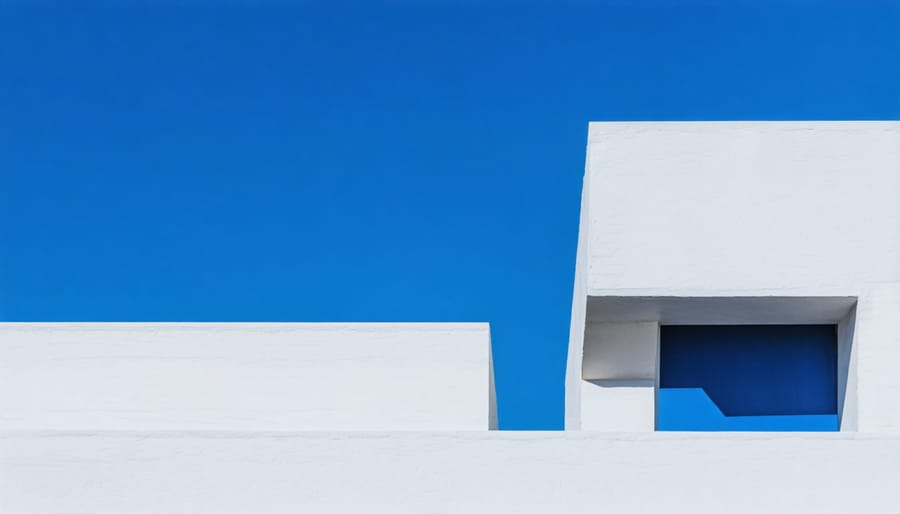
Natural Elements
Nature provides endless opportunities for striking minimalist compositions. The key is to isolate simple, clean elements from their surroundings. A single tree against a foggy backdrop, a lone seabird gliding across an empty sky, or ripples in sand dunes can create powerful minimalist statements.
When shooting natural elements, timing and weather conditions play crucial roles. Overcast days can create soft, even lighting that reduces distracting shadows, while early morning fog can naturally isolate subjects from busy backgrounds. Look for singular elements that stand out: a yellow leaf on fresh snow, a solitary boulder on a beach, or a lone flower in a vast field.
Pay special attention to negative space – the empty areas around your subject. In nature photography, this might be a clear blue sky, calm water, or pristine snow. These clean backgrounds help emphasize your main subject while maintaining the minimalist aesthetic.
Consider shooting in black and white to further simplify natural scenes. This technique can help eliminate distracting colors and draw attention to forms, textures, and patterns found in nature.
Urban Minimalism
Urban environments offer a goldmine of minimalist photography opportunities, often hiding in plain sight. The clean lines of modern architecture, geometric patterns of high-rises, and stark shadows cast by city structures create perfect minimalist compositions. Look for isolated elements against uniform backgrounds, like a single window on a vast concrete wall or a solitary street sign against a clear sky.
Parking structures, subway stations, and pedestrian bridges are particularly rich in minimalist potential. Their repetitive elements and strong leading lines can be simplified through careful framing. Try positioning yourself at different angles to eliminate distracting elements and isolate your chosen subject.
Early morning or late evening hours work best for urban minimalism, as the softer light and fewer people allow for cleaner compositions. Pay attention to negative space created by buildings and infrastructure – sometimes the emptiness between structures tells a more compelling story than the structures themselves.
Weather conditions can also enhance urban minimalist shots. Fog can naturally isolate buildings, while rain-slicked streets create reflective surfaces that simplify and mirror urban geometry. Remember to experiment with both color and black-and-white processing, as each can dramatically affect the impact of your urban minimalist compositions.
Abstract Minimalism
Abstract minimalism takes everyday objects and transforms them into striking geometric forms, patterns, and shapes that challenge viewer perception. By focusing on essential elements and stripping away context, photographers can create powerful visual statements from the most mundane subjects. The key lies in recognizing the hidden potential in ordinary items – a simple window frame can become a study in lines and negative space, while a spiral staircase viewed from above might transform into a mesmerizing circular pattern.
To create compelling abstract minimalist images, focus on isolated details rather than entire objects. Look for strong geometric shapes, repeating patterns, and interesting textures in your environment. Experiment with different abstract photography techniques like extreme close-ups, unusual angles, and deliberate defocusing to emphasize form over function.
Light and shadow play crucial roles in abstract minimalism. Watch how natural light creates interesting patterns throughout the day, or use artificial lighting to sculpt shadows and highlight specific elements. Remember, successful abstract minimalist photos often leave viewers wondering about the original subject while appreciating the pure visual elements of the composition.
Post-Processing for Minimalist Images
Cleaning Up Distractions
The essence of minimalist photography lies in eliminating distractions, and knowing how to clean up your compositions is a crucial skill. Start by scanning your frame for elements that don’t contribute to your main subject or message. Look for objects that pull attention away from your focal point – things like stray branches, random pedestrians, or unnecessary background clutter.
When shooting, try physically moving around your subject to find angles that naturally exclude distracting elements. Sometimes, taking a few steps to the left or right can help you frame your subject against a cleaner background. Pay special attention to the edges of your frame, where unwanted elements often creep in unnoticed.
Consider using a wider aperture to blur distracting backgrounds, effectively separating your subject from chaos. In urban environments, timing your shots between passing cars or waiting for crowds to clear can make a significant difference. For landscape photographers, arriving early or staying late helps avoid unwanted human elements in natural scenes.
During post-processing, use careful cropping to strengthen your composition. While you can remove distractions in editing, it’s always better to get it right in camera. Remember, minimalism isn’t just about what you include – it’s equally about what you choose to leave out. Train your eye to recognize and eliminate elements that don’t serve your photographic vision, and your minimalist images will become stronger and more impactful.
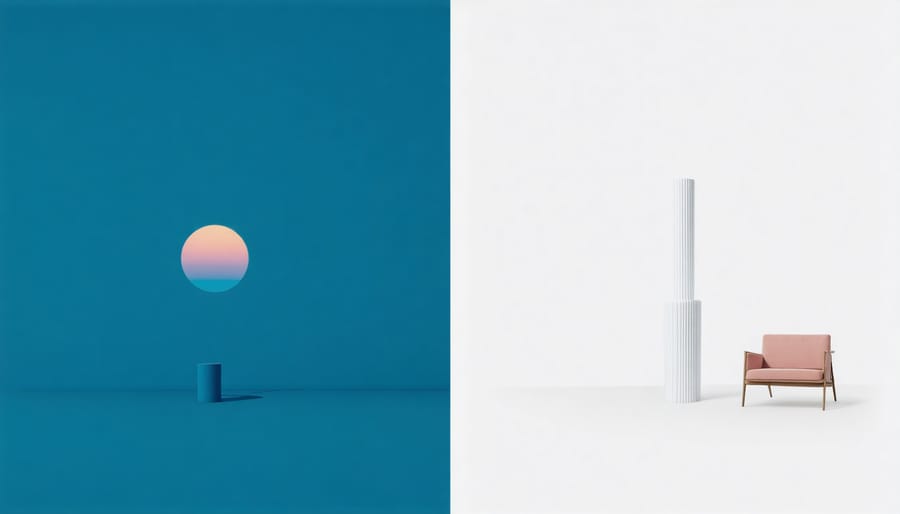
Tonal Adjustments
In minimalist photography, tonal adjustments play a crucial role in achieving that perfect balance between simplicity and impact. Start by focusing on contrast – the cornerstone of minimalist imagery. High contrast can create bold, dramatic statements, while subtle contrast variations often produce more contemplative, ethereal results.
Consider working in black and white initially, as it helps train your eye to see tonal relationships more clearly. Adjust your highlights and shadows deliberately, ensuring they complement rather than compete with your composition. When working with color, less is definitely more. Try limiting your palette to one or two dominant colors, or explore monochromatic variations of a single hue.
The key to successful creative post-processing effects in minimalist photography lies in subtlety. Small adjustments to exposure, clarity, and tone curves can dramatically impact your image’s mood. Pay special attention to negative space – the tonal quality of these areas should enhance, not distract from, your main subject.
Remember to maintain consistency in your editing style. Whether you prefer muted, pastel tones or stark contrasts, ensuring your adjustments align with your artistic vision will strengthen your minimalist narrative. Sometimes, simply reducing saturation or increasing whites can transform a busy image into a compelling minimalist photograph.
Black and White Conversion
Black and white conversion can transform an already minimal composition into something even more powerful by stripping away the potential distraction of color. The absence of color forces viewers to focus on form, texture, and contrast – the fundamental elements of minimalist photography.
When considering a monochrome conversion, look for scenes with strong geometric shapes, pronounced textures, or dramatic light and shadow play. High-contrast scenes often work particularly well, as the stark difference between light and dark areas creates visual impact. Architecture, isolated objects against clean backgrounds, and natural patterns are excellent candidates for black and white treatment.
To create compelling black and white minimalist images, experiment with your conversion settings rather than simply desaturating the image. Adjust the luminance values of different color channels to enhance contrast and emphasize specific elements. Pay special attention to the tonal range – ensure your blacks are rich and your whites are clean without losing detail in either the shadows or highlights.
Consider shooting in RAW format to give yourself maximum control over the conversion process. This allows you to fine-tune the image’s contrast, clarity, and tonal balance in post-processing to achieve exactly the minimalist aesthetic you’re aiming for.
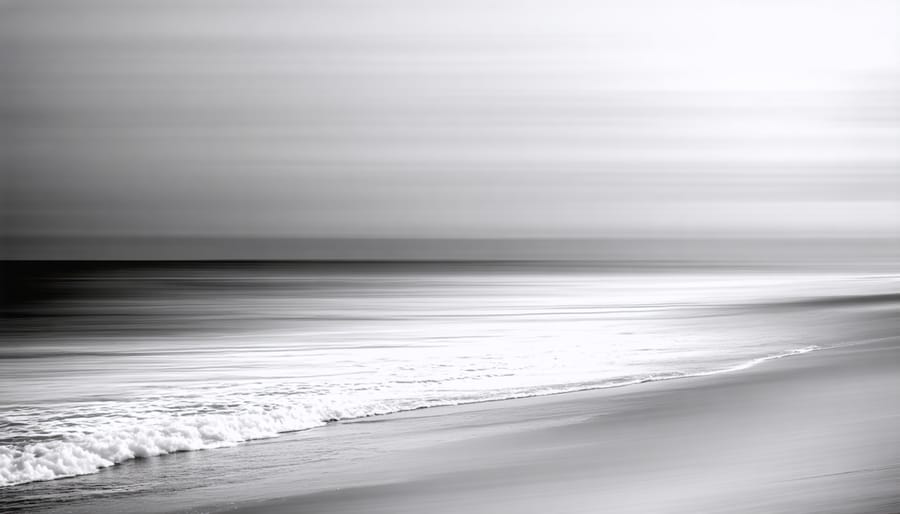
Minimalist photography offers a unique way to tell powerful stories through simplicity and intentional composition. As we’ve explored throughout this guide, the key to creating compelling minimalist images lies in developing an eye for clean lines, negative space, and subtle details that speak volumes.
Remember that successful minimalist photography isn’t about emptiness – it’s about purposeful reduction. By eliminating distracting elements and focusing on essential components, you create images that instantly capture attention and evoke emotion. Whether you’re photographing architecture against a clear sky, a lone figure on an empty beach, or abstract patterns in everyday objects, the principles we’ve discussed will help you craft more impactful images.
Don’t be afraid to experiment with different techniques and subjects. Start by practicing in familiar locations, looking for opportunities to simplify complex scenes. Challenge yourself to find minimalist compositions in unexpected places – even busy urban environments can yield striking minimal photographs when viewed through the right lens.
As you develop your minimalist style, focus on quality over quantity. Take time to consider your composition, experiment with different angles, and pay attention to how light and shadow play across your subject. Sometimes, the most powerful minimalist photographs come from spending extra time with a single scene, gradually stripping away elements until only the essence remains.
Most importantly, remember that minimalist photography is a journey of continuous learning and refinement. Each shoot is an opportunity to further develop your eye and technical skills. Start implementing these ideas in your next photography session, and you’ll be surprised at how quickly you begin seeing the world through a minimalist lens.
